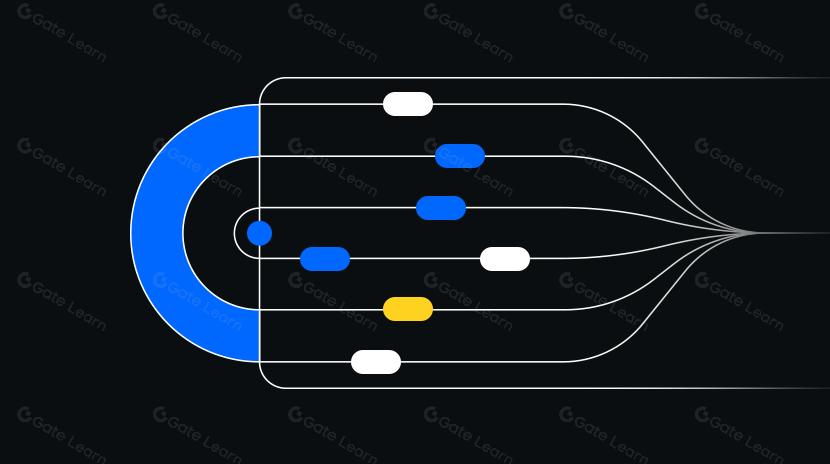what is a wick

Candlestick wicks (also known as shadows or tails) are essential elements in candlestick technical analysis, representing the price range movement during a specific time period that didn't result in the closing price. Specifically, the upper wick shows the difference between the highest price and either the closing or opening price (whichever is higher); the lower wick displays the distance between the lowest price and either the closing or opening price (whichever is lower). For cryptocurrency traders, wicks provide valuable information about market volatility, buyer-seller strength dynamics, and potential price reversal signals.
Key Features of Candlestick Wicks
-
Structural Components:
- Upper Wick: The thin line connecting the top of the real body to the highest price of that period
- Lower Wick: The thin line connecting the bottom of the real body to the lowest price of that period
- Real Body: The rectangular section between the opening and closing prices
-
Signal Implications:
- Long Upper Wick: Indicates sellers actively entered at higher prices, showing resistance above
- Long Lower Wick: Indicates buyers actively supported at lower prices, showing support below
- Long Wicks on Both Sides: Indicates extreme volatility but eventual balance restoration
- No Wicks: Indicates a strong trend with buying or selling pressure clearly dominant
-
Pattern Recognition:
- Doji: Minimal real body with longer wicks, indicating market indecision
- Hammer: Long lower wick with little to no upper wick, often seen at the end of downtrends
- Shooting Star: Long upper wick with little to no lower wick, often seen at the end of uptrends
- Engulfing Patterns: Current candle's real body completely covers previous candle's real body, with wick length determining strength
-
Timeframe Impact:
- Smaller Timeframes (1-minute, 5-minute charts): Wick signals appear frequently but have lower reliability
- Larger Timeframes (daily, weekly charts): Wick signals appear less frequently but carry higher reliability
Market Impact of Candlestick Wicks
Candlestick wicks have significant implications for market analysis, particularly in highly volatile markets like cryptocurrencies. Wicks demonstrate the behavior of market participants at specific price ranges, reflecting short-term supply and demand dynamics. When prominent wick formations appear, they often signal potential market sentiment shifts or power balance adjustments, which are crucial signals for traders seeking entry and exit points.
In technical analysis, wicks are commonly used in conjunction with other indicators such as volume, support and resistance levels, or moving averages to enhance trading decision accuracy. Algorithmic trading systems in the market also incorporate wicks as important parameters in their decision models.
Risks and Challenges of Candlestick Wicks
Despite their widespread application in technical trading, wick analysis has certain limitations and risks:
-
Interpretation Pitfalls:
- Single candlestick wicks should not be interpreted in isolation from market context and overall trends
- The same wick formations may have different meanings under varying market conditions
- Over-reliance on wicks while ignoring fundamental factors may lead to incorrect trading decisions
-
Technical Limitations:
- In low liquidity markets, a single large trade may create misleading wicks
- Extreme market events (like flash crashes) can produce abnormally long wicks that don't represent true market consensus
- High-frequency trading and market-making activities may create noise affecting wick reliability
-
Application Challenges:
- Need to analyze trading volume alongside wick signals for validity
- Different cryptocurrencies' market characteristics affect how wicks should be interpreted
- During consolidation or low volatility phases, the predictive value of wick signals decreases
Candlestick wick analysis is a foundational tool for technical traders but should be part of a comprehensive analysis rather than a standalone trading basis. Experienced traders typically verify signals conveyed by wicks using multiple technical indicators and market context to reduce misinterpretation and improve trading success rates.
Candlestick wicks hold unique value in cryptocurrency trading, providing not only an intuitive representation of price volatility but also reflecting short-term market sentiment and power dynamics. For both novice and professional traders, understanding the formation principles of wicks and correctly interpreting their signals is an important step in mastering technical analysis. However, no technical indicator is a crystal ball for predicting the future, and traders should establish systematic risk management strategies, using wick analysis as one component of the decision-making process rather than the sole basis.
Share
Related Articles

Exploring 8 Major DEX Aggregators: Engines Driving Efficiency and Liquidity in the Crypto Market

What Is Copy Trading And How To Use It?
